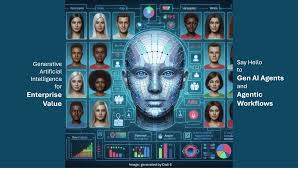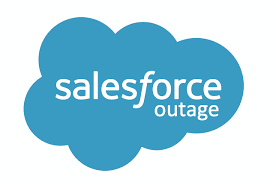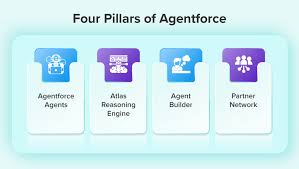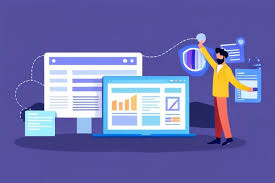Salesforce, now one of the most influential companies in tech history, was founded by Marc Benioff after his successful tenure at Oracle. Having witnessed the potential of the internet, Benioff realized it would usher in a new era for delivering enterprise software through the cloud. However, this new approach demanded a complete overhaul of traditional business models, marketing strategies, and software development practices. Salesforce would embody this transformation, evolving over the decades into a platform supporting a diverse array of enterprise applications. Today, Salesforce’s flagship initiative is Agentforce, a pioneering wave of AI agents built on the Salesforce platform. This initiative, which I covered in detail earlier this month, exemplifies Benioff’s forward-thinking vision for AI. He passionately argues that Salesforce is well-positioned to lead in this space, and his insights on AI and its potential are as compelling as they are thought-provoking. Before diving into Agentforce and Benioff’s views on AI, it’s important to explore his early life and the founding of Salesforce. Benioff’s path to becoming the CEO of one of the most powerful software companies in the world was shaped by an early interest in technology. His first foray into software development was creating an app called “How to Juggle,” which he sold for to CLOAD Magazine in Goleta, California. This early success marked the beginning of a long career in tech. Benioff went on to establish an Atari game company called Liberty Software and later wrote assembly code for the Mac as part of an internship. Despite his success as a software developer, he transitioned to a leadership role after realizing his interest in the broader business of technology. He credits his time at Oracle, where he learned the intricacies of sales, marketing, and customer communication, as critical to shaping his vision for Salesforce. Oracle, during Larry Ellison’s prime, was an ideal place to hone these business skills, which Benioff would later apply to revolutionize the enterprise software space. With this foundation, Benioff founded Salesforce, a company that has fundamentally changed the way businesses engage with technology. The company’s success lies not just in its cloud-based software, but in its ongoing evolution to address new challenges, including the AI-powered Agentforce initiative, which stands at the forefront of Salesforce’s future growth. Benioff’s journey, from a young programmer to the CEO of a global tech giant, is a testament to his visionary approach and adaptability in an ever-changing tech landscape. Marc Benioff’s early entrepreneurial instincts were evident even before he fully embraced the title of entrepreneur. From a young age, he knew he wanted to build something of his own, though he hadn’t yet honed the full set of skills needed to succeed in business. He had a knack for technology, excelling as a programmer working in assembly code, but his mentors, including university professors and colleagues at Apple, recognized that being an entrepreneur required more than just technical ability. They encouraged him to develop his sales, marketing, and business acumen. His early exposure to these lessons was pivotal in shaping his future trajectory. Benioff’s transition from a programmer to a business leader began when he sought advice from Bill Jost at Apple, who connected him with Gary Gibson, an Oracle executive. After a memorable and unexpected interview, Benioff joined Oracle, starting with a role answering calls at the company’s 800-number. He quickly moved into sales and marketing, eventually working directly with Larry Ellison, who would become a significant mentor over the next 13 years. Benioff’s success at Oracle set the stage for his eventual departure to start Salesforce in 1999. In the mid-1990s, while at Oracle, Benioff had an epiphany while using a web browser. The internet was transforming how software could be delivered, and Benioff saw the potential for a new business model based on cloud computing. At this time, Oracle was focused on the network computer—a vision Benioff did not fully share. After discussing his ideas with Larry Ellison and taking some time off for reflection and research, Benioff recognized that the world was on the cusp of a major shift in technology. He felt compelled to create something new that would leverage the internet, offering software over the web through a subscription model. During his time off, Benioff traveled to Hawaii, reflecting on the future of the tech industry and contemplating ideas. He also experimented with domain names, purchasing You.com and later gifting it to a friend who turned it into a search and AI company. Benioff returned to Larry Ellison to share his vision of a cloud-based business model and later found inspiration from spiritual gurus during a trip to India, who reminded him that success in business should also be grounded in positive values. Benioff’s experience led to the founding of Salesforce with its revolutionary 1-1-1 Model—dedicating 1% of equity, profit, and employee time to philanthropy. Salesforce also embraced emerging technologies such as social, mobile, and AI, and created a new business model through subscription-based services. This combination of technological innovation and a strong sense of social responsibility has set Salesforce apart, attracting both admiration and emulation from other companies. Benioff’s Career Benioff’s career is a testament to the power of surrounding oneself with great people, continuing to learn, and having a clear vision. His leadership at Salesforce has been guided by values he believes are crucial to the company’s success and its ability to make a positive impact on the world. His insights on the Innovator’s Dilemma, a concept popularized by Clayton Christensen, highlight the challenges companies face as they evolve with changing technologies. While Salesforce’s core principles remain intact, the company has continued to adapt to new technology paradigms, ensuring it remains at the forefront of innovation in the software industry. Marc Benioff (MB) recently shared his excitement about the future of AI and its potential to revolutionize business and technology. He explained that, from a business perspective, this is the most thrilling moment in his career. AI, according to him, will transform how enterprises operate, making them more cost-efficient,



















